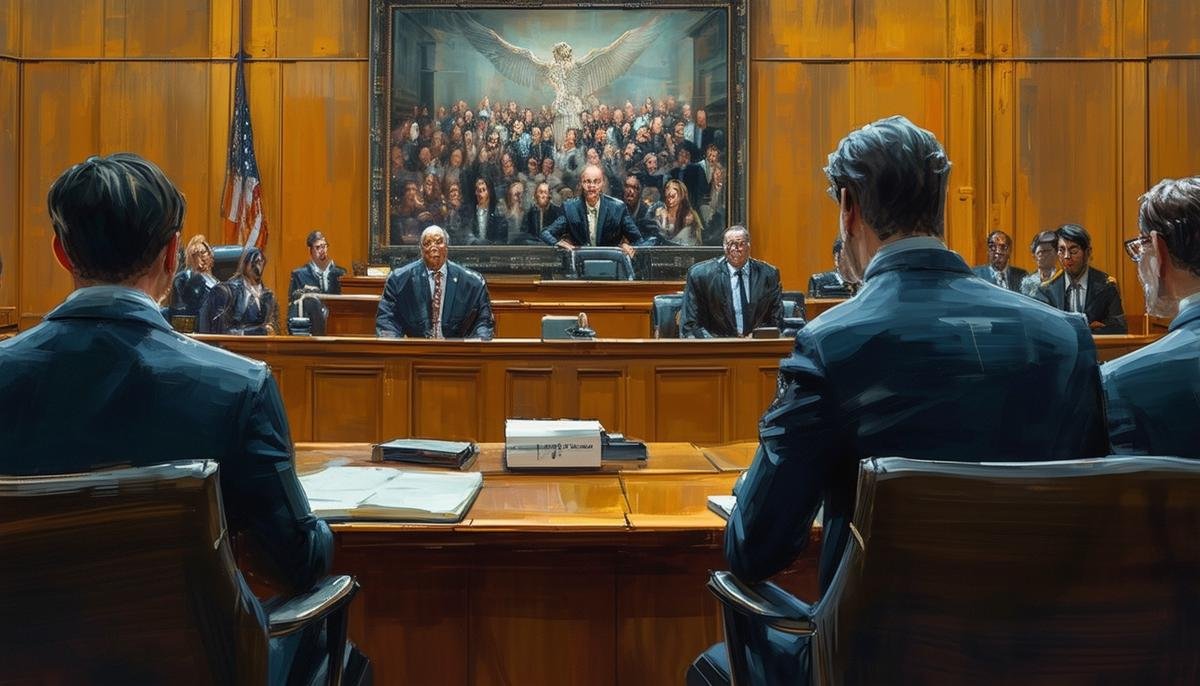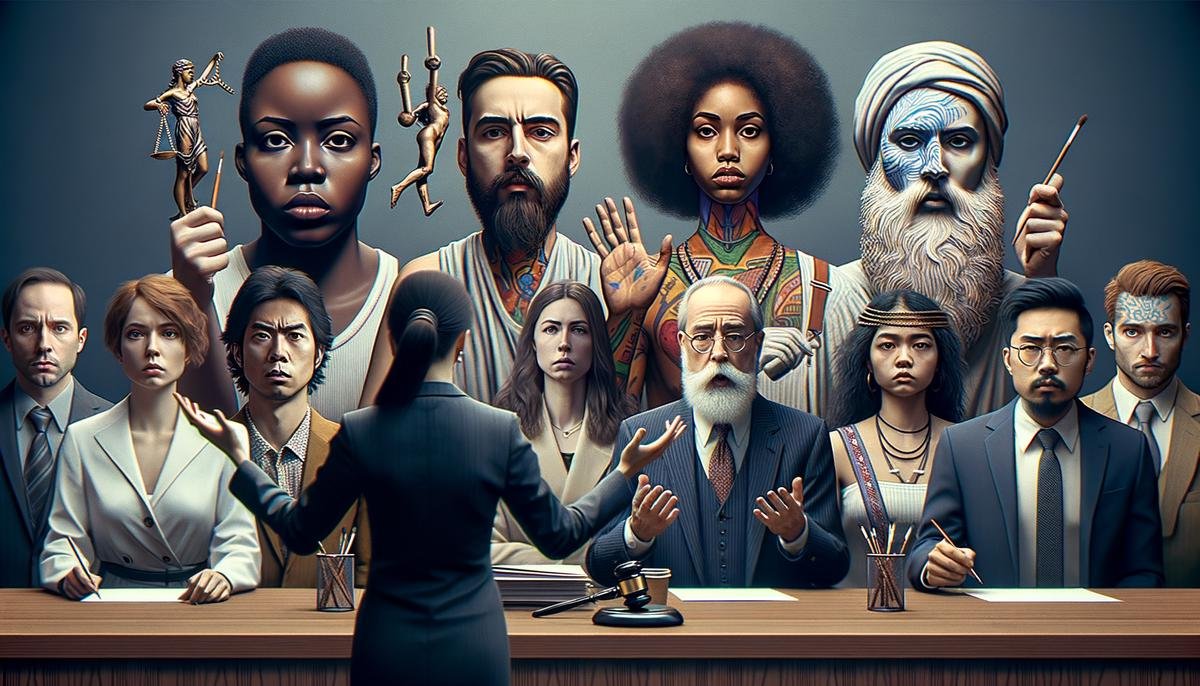Generative AI is reshaping intellectual property concepts. As these systems create new works by learning from existing ones, they raise questions about ownership and rights. This shift requires reconsidering how we protect creativity while embracing technological advancements.
Generative AI and Intellectual Property Challenges
Generative AI systems are disrupting the intellectual property landscape by producing text, images, and songs from learned data. However, many inputs come from copyrighted or trademarked works, leading to claims of infringement. Artists lack control over how their creations enter AI datasets, resembling unauthorized remixing.
Courts are grappling with what constitutes fair use and whether AI-generated content is transformative enough to stand on its own. Legal battles like Andersen v. Stability AI seek clarity on these issues. Image service Getty has taken legal action against AI companies for allegedly misusing watermarked images.
For companies using AI tools, the stakes are high. Businesses must protect themselves by:
- Checking AI vendors for licenses
- Ensuring ethical training of AI models
- Requesting vendors to show how outputs are created
Authors and artists should monitor how their creations are used within AI models. Tools exist to search datasets and detect use of one's work. Trademarks face similar challenges in protecting brand identity within AI-generated works.
Businesses must adapt their agreements with AI tool providers, adding specific clauses related to AI and IP. As legal scrutiny evolves, dialogue between creators, users, and policymakers remains critical.

Legal Framework and Current Litigation
Legal battles in generative AI focus on interpreting 'derivative works' and 'fair use' as they apply to AI-generated content. High-profile cases offer insight into how the future legal landscape may unfold.
Andersen v. Stability AI challenges the alleged unauthorized use of artists' styles by AI platforms. The court's ruling could set a precedent for evaluating 'transformative use' in AI contexts.
Getty Images' lawsuit against AI companies, including Stable Diffusion creators, centers on the inclusion of watermarked images in AI training datasets. The court's decision could have widespread implications for how AI models access digital media.
Courts must balance the rights of original content creators with AI technology's potential. Existing IP laws were not designed with AI in mind, making adaptation challenging. These legal proceedings spark broader discussions on how IP law should evolve to accommodate AI's capabilities and outputs.
Companies engaging with generative AI must thoroughly assess content and adhere to IP law to mitigate legal risks. Incorporating strong IP clauses in agreements and maintaining transparency in AI-generated work use is essential.

Mitigating Risks and Protecting IP
Safeguarding intellectual property in the AI era requires proactive measures. Companies and content creators need to focus on vigilance and preparation to protect their work and ensure legal compliance.
Implementing rigorous licensing practices is fundamental. AI developers must secure appropriate permissions when incorporating copyrighted or trademarked materials into training datasets. Encouraging transparency in dataset compilation can foster cooperation between AI developers and the creative community.
Content creators should actively monitor for unauthorized use of their work in datasets or AI-generated outputs. Swift action is vital when infringement is suspected.
Companies leveraging generative AI should keep detailed records of their training material, documenting the origin and licensing status of every data source. This aids in defending against legal challenges and builds trust with stakeholders.
Fostering partnerships between AI developers and creators can lead to innovative licensing solutions, benefiting both parties through improved AI systems and compensation for creators.
Integrating comprehensive IP clauses into vendor and customer agreements is crucial for businesses incorporating AI tools. These contracts should address:
- AI's role in creation
- Ownership of generated works
- Procedures for managing potential IP conflicts
As AI continues to influence creative industries, companies and creators must adapt to safeguard their interests. Prioritizing ethical data sourcing, fostering cooperative relationships, and maintaining diligent oversight will be essential in ensuring AI remains a tool for creation rather than contention.

Future of IP in an AI-Driven World
As AI becomes intertwined with creative processes, the future of intellectual property rights faces significant transformation. AI's content generation capabilities raise questions about the adequacy of existing IP frameworks and the relevance of traditional concepts like authorship and originality.
Traditional IP systems, designed to incentivize human creativity, may struggle to contain AI outputs. As machines replicate styles and produce content indistinguishable from human-made works, establishing clear ownership rights becomes challenging.
There's a need to redefine what constitutes a transformative work. AI can rapidly create outputs that may not meet traditional legal tests for transformation yet still possess significant value. This suggests a potential shift in how we view transformations in AI artistry.
New legal standards may be necessary. Policymakers might explore frameworks that acknowledge AI's role as a co-creator rather than merely a tool. This could lead to a hybrid IP model that attributes certain rights to AI inputs while preserving human contributors' rights.
Collaborative licensing systems could reward creators for both initial input and AI-generated derivatives of their work. This approach could foster an ecosystem where human creativity remains at the forefront while benefiting from AI's capabilities.
Active engagement between technology developers, legal experts, and content creators will be crucial in addressing this uncharted territory. Open dialogues can drive the evolution of IP laws, ensuring they are robust enough to handle future challenges while remaining adaptable to rapid technological change.
Moving forward, balancing innovation and protection will be crucial. By addressing these challenges thoughtfully, we can harness AI's potential without compromising the value of human creativity.
- World Intellectual Property Organization. WIPO and Artificial Intelligence.
- Bailey L, Goldman R, Reader A, et al. AI and the Challenge of Intellectual Property Rights. Panel discussion at the U.S. Department of Justice.
- Coglianese C, Lehr D. Regulating by Robot: Administrative Decision Making in the Machine-Learning Era. Georgetown Law Journal. 2017;105:1147-1223.
- Andersen v. Stability AI et al. Case No. 3:23-cv-00201. United States District Court for the Northern District of California. Filed January 13, 2023.
- Getty Images (US), Inc. v. Stability AI, Inc. Case No. 1:23-cv-00135-UNA. United States District Court for the District of Delaware. Filed February 3, 2023.



